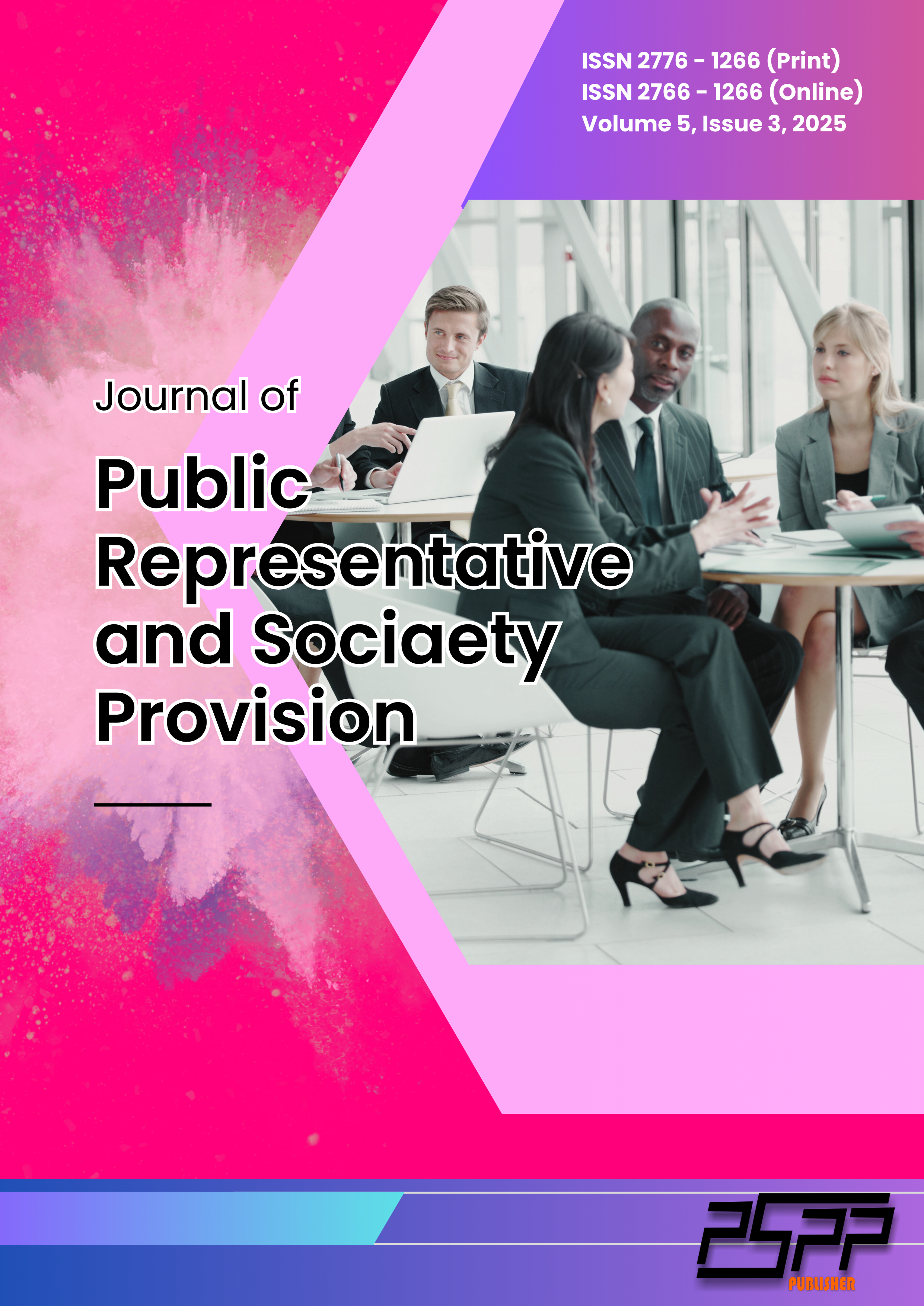Integrative Communication Model in Handling Stunting: A Case Study in Bantaeng Regency
DOI:
https://doi.org/10.55885/jprsp.v5i3.804Keywords:
Stunting, Integrative Communication, Health Management, Cross-Sector Coordination, Community ParticipationAbstract
Stunting remains a critical health issue in Indonesia, with long-term impacts on human capital and economic development. It is caused by chronic malnutrition, resulting in impaired physical and cognitive growth. This study examines the implementation of an integrative communication model for addressing stunting in Bantaeng, South Sulawesi, using a qualitative case study approach. The research aims to explore how communication strategies are applied across sectors to reduce stunting and improve public health outcomes. Data was collected through field observations and interviews with key stakeholders, including government agencies, health workers, and community leaders. Findings indicate that the success of the program relies on structured inter-sectoral coordination, accurate and integrated data, and the active participation of local communities. The study highlights the importance of using local values, such as language and food traditions, to strengthen communication and increase community engagement. The integrative communication model in Bantaeng combines vertical and horizontal communication, ensuring coordinated actions among stakeholders. The ideal model emphasizes cross-sector communication, community participation, accurate data usage, and deliberative communication practices. This research provides insights into the effectiveness of communication in stunting prevention and offers recommendations for enhancing inter-sectoral collaboration and local participation. The model developed in Bantaeng could serve as a reference for similar health communication programs in Indonesia.
References
Agustinah, A., Andriani, A., & Muchtar, K. (2025). Stunting prevention using a therapeutic communication model: Steps and challenges. Jurnal Komunikasi, 19(2), 117-132. https://doi.org/10.20885/komunikasi.vol19.iss2.art10
Black, R. E., Victora, C. G., Walker, S. P., Bhutta, Z. A., Christian, P., De Onis, M., ... & Uauy, R. (2013). Maternal and child undernutrition and overweight in low-income and middle-income countries. The lancet, 382(9890), 427-451.
Bungin, B. (2003). Analisis Data Penelitian Kualitatif, Jakarta: PT Raja Grafindo Persada.
Cangara, H. (2007). Pengantar Ilmu Komunikasi Edisi Revisi. Jakarta: Raja Grafindo Persada.
Carlson, J. R., & Zmud, R. W. (1999). Channel expansion theory and the experiential nature of media richness perceptions. Academy of management journal, 42(2), 153-170. https://doi.org/10.5465/257090
Firdausi, J. A., & Agustina, I. F. (2024). Unveiling Community Involvement Gaps in Toddler Stunting Recovery. Indonesian Journal of Cultural and Community Development, 15(2), 10-21070. https://doi.org/10.21070/ijccd.v15i2.1042
Gronstedt, A. (2012). The customer century: Lessons from world class companies in integrated communications. New York: Routledge.
Habermas, J. (1985). The theory of communicative action: Volume 1: Reason and the rationalization of society (Vol. 1). Boston: Beacon press.
Hajli, N., Saeed, U., Tajvidi, M., & Shirazi, F. (2022). Social bots and the spread of disinformation in social media: the challenges of artificial intelligence. British Journal of Management, 33(3), 1238-1253. https://doi.org/10.1111/1467-8551.12554
Kincaid, D. L., & Figueroa, M. E. (2009). Communication for participatory development: Dialogue, action, and change. In Routledge handbook of applied communication research (pp. 506-531). Routledge. New York: Rockefeller Foundation.
Melkote, S. R., & Steeves, H. L. 2015. Communication for Development: Theory and Practice for Empowerment and Social Justice (3rd ed.). New Delhi: SAGE Publications.
Muniroh, L., Ambarini, T. K., Putri, A. M., Oktavia, S., Santosa, F. L., & Lailata, I. (2025). Empowering Stunting Prevention: Integrative and Collaborative Initiative Based On The Local Wisdom Of Tengger Tribe. Jurnal Layanan Masyarakat, 9(1). https://doi.org/10.20473/jlm.v9i1.2025.074-085
Rimal, R. N., & Lapinski, M. K. (2009). Why health communication is important in public health. Bulletin of the World Health Organization, 87, 247-247a. https://doi.org/10.2471/BLT.08.000409
Saputra, I. A., & Husain, M. N. (2024). Model Komunikasi Pembangunan Untuk Penurunan Stunting Di Sulawesi Tenggara. Newcomb: Jurnal Ilmu Komunikasi dan Media, 2(1), 32-41.
Schiavo, R. (2013). Health communication: From theory to practice. US: John Wiley & Sons.
Sentika, R., Setiawan, T., Rattu, D. J., Yunita, I., Masita, B. M., & Basrowi, R. W. (2024, November). The importance of interprofessional collaboration (IPC) guidelines in stunting management in Indonesia: A systematic review. In Healthcare (Vol. 12, No. 22, p. 2226). MDPI. https://doi.org/10.3390/healthcare12222226
Servaes, J. (2022). Communication for development and social change. In The Routledge handbook of nonprofit communication (pp. 23-31). Routledge. London: SAGE Publications.
Snyder, L. B., Hamilton, M. A., Mitchell, E. W., Kiwanuka-Tondo, J., Fleming-Milici, F., & Proctor, D. (2004). A meta-analysis of the effect of mediated health communication campaigns on behavior change in the United States. Journal of health communication, 9(S1), 71-96. https://doi.org/10.1080/10810730.2017.1296510
Trihono, T., Atmarita, A., Tjandrarini, D. H., Irawati, A., Nurlinawati, I., Utami, N. H., & Tejayanti, T. (2015). Pendek (stunting) di Indonesia, masalah dan solusinya. Lembaga Penerbit Badan Litbangkes.
Victora, C. G., Adair, L., Fall, C., Hallal, P. C., Martorell, R., Richter, L., & Sachdev, H. S. (2008). Maternal and child undernutrition: consequences for adult health and human capital. The lancet, 371(9609), 340-357.
Wang, Y., & Guan, L. (2020). Mapping the structures of international communication organizations’ networks and cross-sector relationships on social media and exploring their antecedents. Public Relations Review, 46(4), 101951. https://doi.org/10.1016/j.pubrev.2020.101951
Downloads
Published
How to Cite
Issue
Section
License
Copyright (c) 2025 Journal of Public Representative and Society Provision

This work is licensed under a Creative Commons Attribution-ShareAlike 4.0 International License.


















